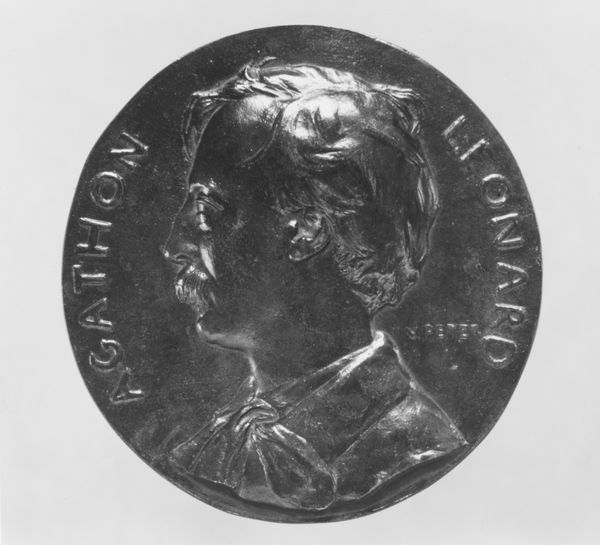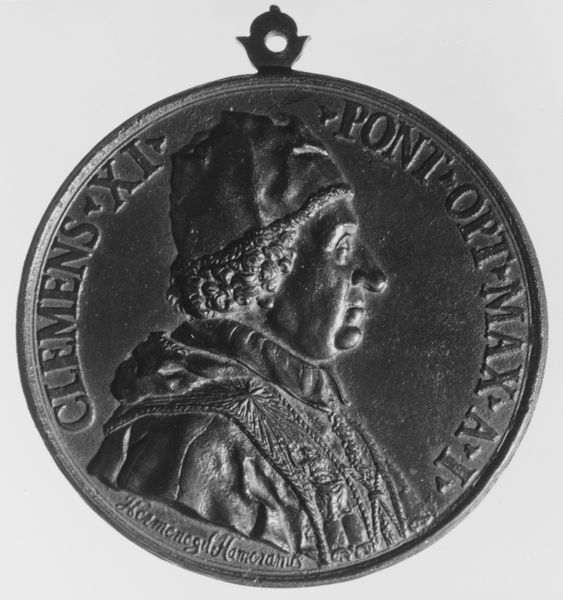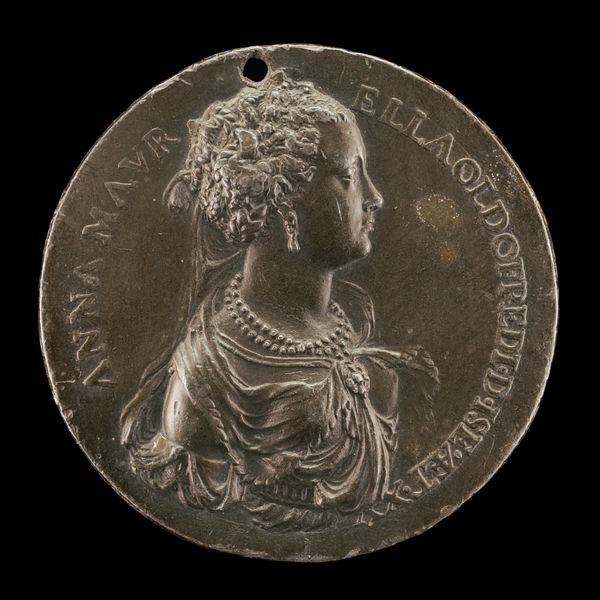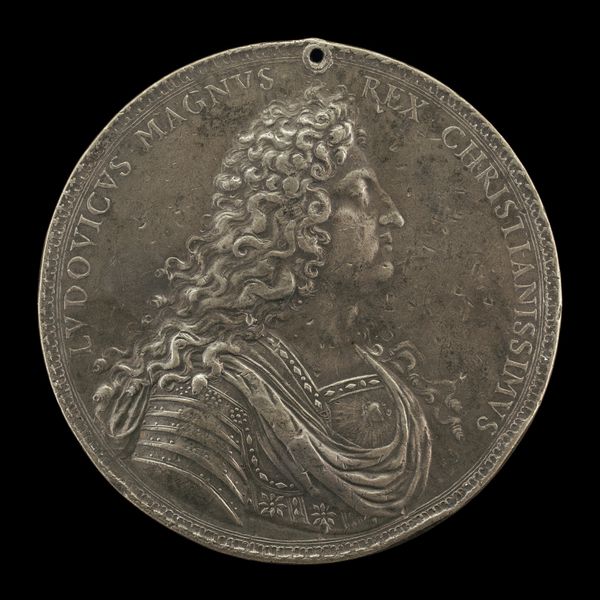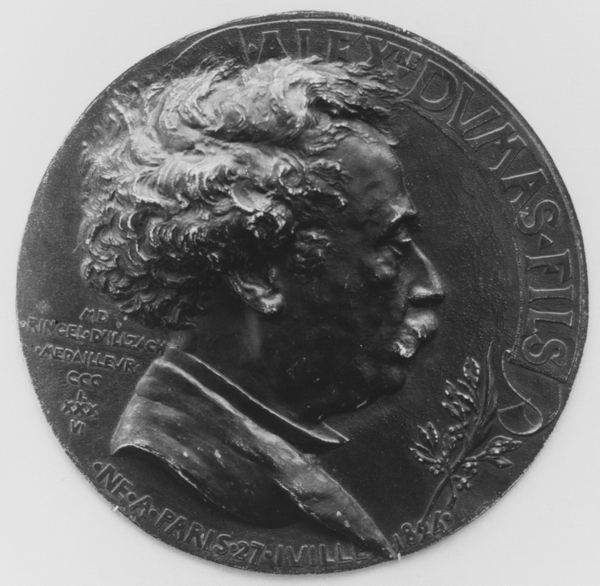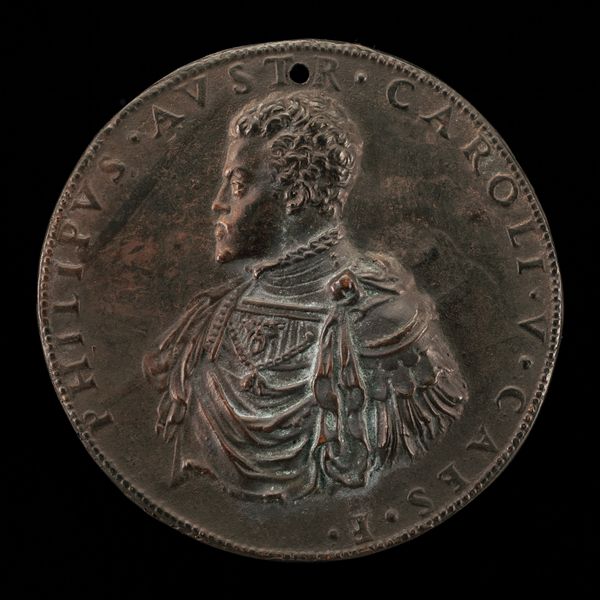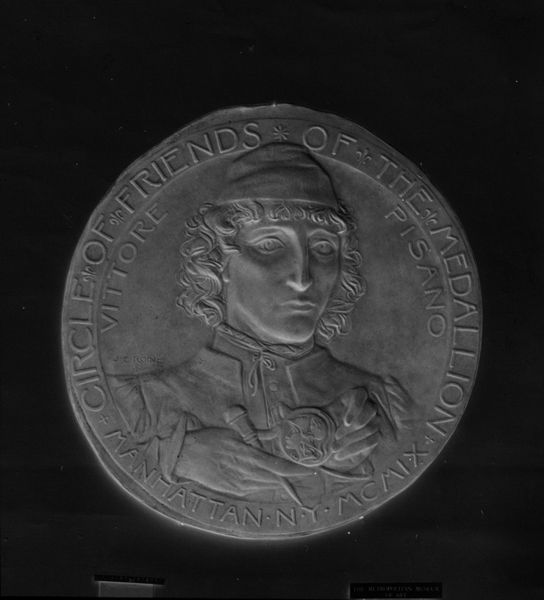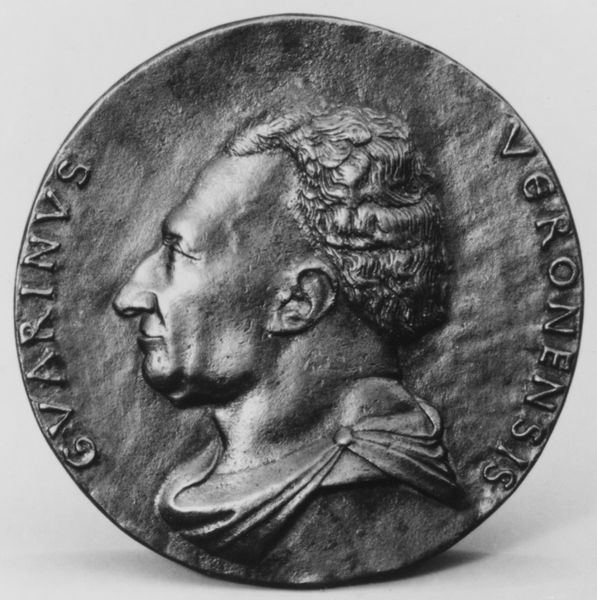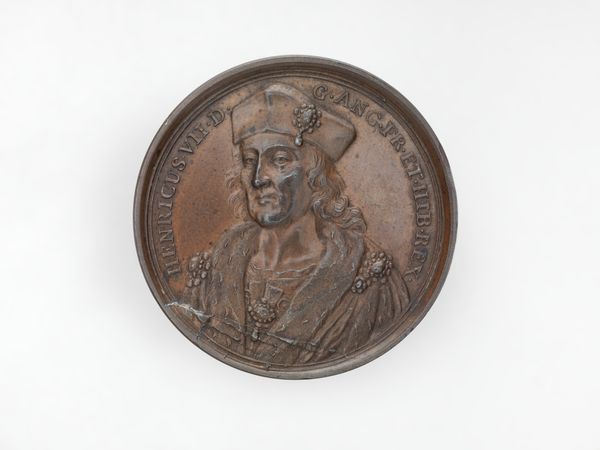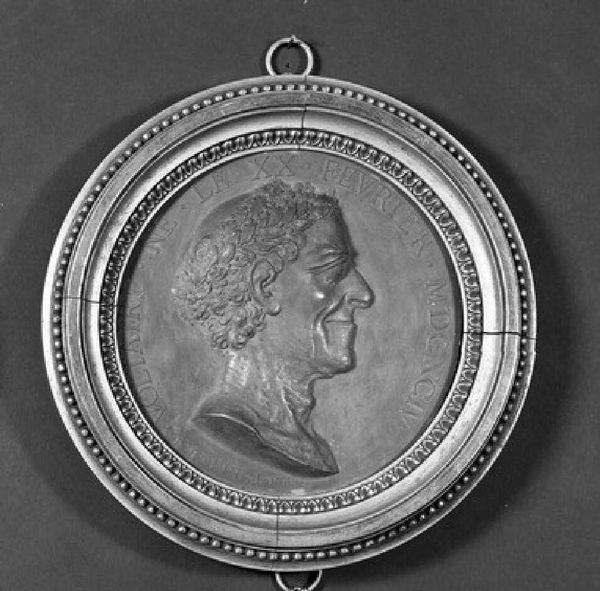
François René, Vicomte de Chateaubriand (1768–1877) 1830 - 1865
0:00
0:00
metal, sculpture
#
portrait
#
medal
#
metal
#
sculpture
#
sculpture
#
decorative-art
Dimensions: Diameter: 6 5/8 in. (16.8 cm)
Copyright: Public Domain
Curator: Looking at this piece, I immediately sense a certain weightiness. It's striking, and though monochromatic, it evokes a range of emotions, don’t you think? Editor: Indeed. This is a medal, crafted between 1830 and 1865, portraying François René, Vicomte de Chateaubriand, made of metal. Bovy signed it. Examining this work necessitates considering Chateaubriand’s political clout during the Bourbon Restoration. Curator: Absolutely. Beyond his individual story, I see a representation of power and status. These medals were often distributed amongst a select group. Editor: Certainly, the medal functions as a potent tool in crafting public perception and circulating ideologies. Who gets remembered, and how, becomes crystallized in this metallic form. Its reproducibility speaks volumes too, doesn’t it? Curator: It does. I wonder about the choice to immortalize him this way and who it was aimed to persuade. Was it aimed to promote specific sociopolitical interests and values, to a group or a gender? This object may unveil historical contexts for identity constructions within exclusive communities. Editor: Precisely. This piece reveals not just the historical currents of image-making in the nineteenth century, but also touches on broader issues surrounding historical memory. Its function within these elitist circles reveals networks of influence and cultural power, wouldn't you say? Curator: Yes, this little metallic disk isn't just about representation, but how representation upholds existing orders. Medals such as these solidify a social, even gender, and racial hierarchy, perpetuating narratives for generations. Considering Bovy signed it gives us additional understanding, no? Editor: Absolutely, his place as a significant figure helps give shape to the production and reception of the work and gives us perspective on how power operates culturally. Food for thought, really. Curator: Indubitably. Viewing the object this way provides essential groundwork to study representation, identity, and how historical biases emerge from supposedly objective images.
Comments
No comments
Be the first to comment and join the conversation on the ultimate creative platform.
